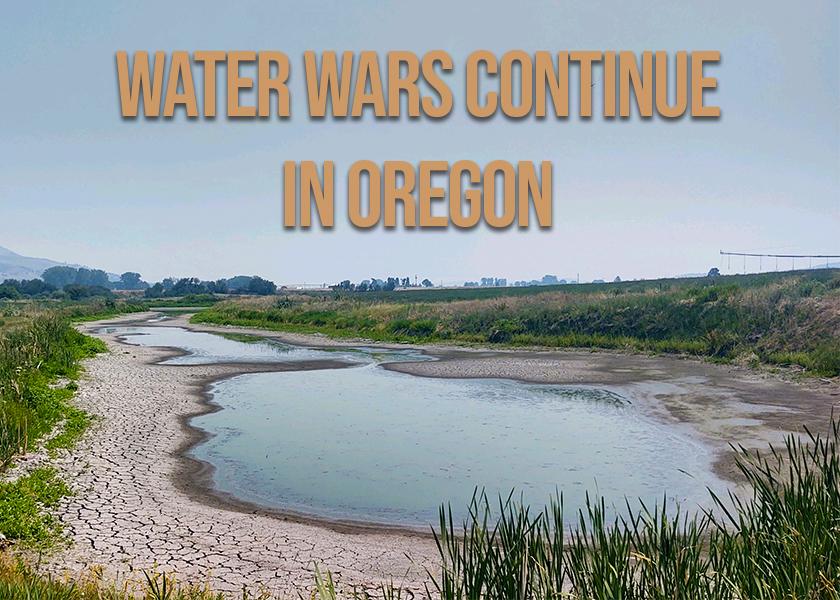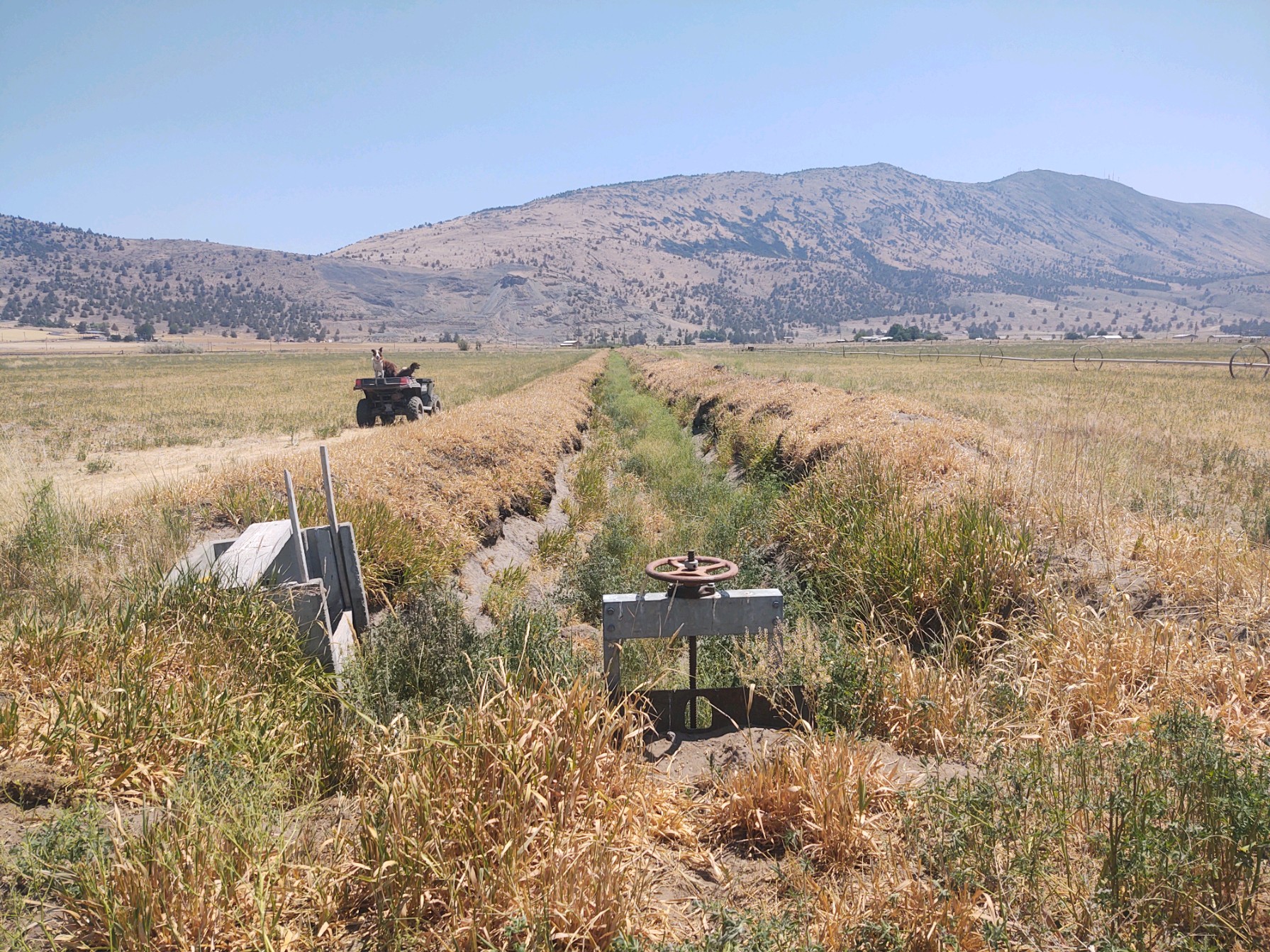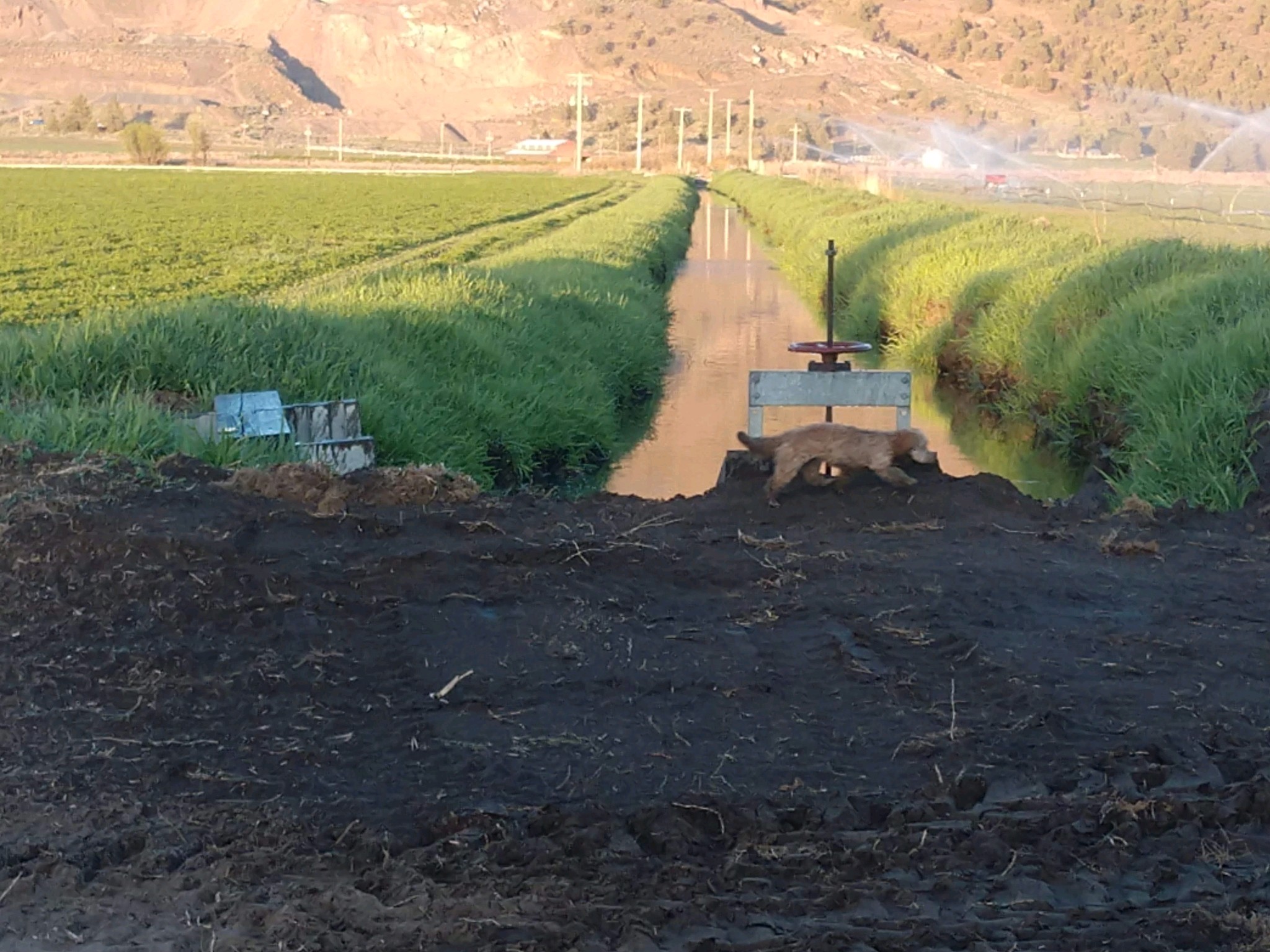Klamath Water War Gravely Worries Oregon Farmer

Water is essential. So, understandably, worries are mounting, and farmers are growing frustrated at the federal government for cutting off their main water supply source in Klamath County, Oregon. The longstanding heated issue that brings both salmon and farmers to the table is now fueled by a historic drought, coupled with the ‘Bootleg Fire’ – that has little containment, already burning 200,000 plus acres.

While Todd Koch’s Oregon dairy and creamery is located 265 miles north in the Willamette Valley, he too is worried. Koch also farms 800 acres of alfalfa and grass, along with running a 160-cow beef operation in Klamath County.
Oregon’s geography differs greatly, with water coming in two forms: rain or snow. The western part of the state, where Koch’s dairy resides, gets plenty of rainfall to meet their needs. However, the eastern side of the state doesn’t fair as well, with the Cascades blocking most of the rain from reaching the high desert region.
Peaks of the Cascades collect that moisture in snowpacks, which is then slowly distributed through snowmelt throughout the spring and summer. However, the Klamath River Basin is arguably the worst-hit part of the state, especially now as the federal agency that controls water distribution would not release any water. This is the first in more than 100 years.

For Koch, it is tough. In a normal year, his beef cows would be grazing pastures and his 800 acres would grow nearly 3,000 tons of hay annually. However, with zero water, 2021 paints a drastically different story. “It is absolutely gut-wrenching,” Koch says. “It is crushing knowing how productive your farmland can be.”
With dried up pastures, Koch is now forced to feed hay to his cows, who would otherwise be grazing irrigated pastureland this time of year. “We have zero hay, too,” he adds. “So, we are forced to purchase hay to feed our cattle.”
Hay is difficult to locate and expensive when farmers can locate it. Koch states some hay can be found locally, for those farmers who have a well and can pump groundwater. But the cost of hay is running $80 to $100 more per ton than a year ago.

The reason water is being cut off stems from the Endangered Species Act, stating the water in Upper Klamath Lake must be maintained at a certain minimal level to protect endangered fish species that live in the lake. With record inflows, water can’t be released without risking extinction for the struggling fish.
However, the impact is also great to the farmers who feed the country, including Koch, who tries to put his focus back on his Canby, Ore. dairy, but still grows frustrated with what is happening in southern Oregon. He says that nobody is a bigger cheerleader for the fish than farmers, but also says there is no real accountability. “Shut off the water to help the fish population,” he says. “Then why are we not seeing recovery?”
Meanwhile, the U.S. Drought Monitor shows more than half of the west faces extreme drought conditions, including wide areas of California and Oregon. Scientists worry that the region may be experiencing the worst drought period in centuries.
For Koch, he is clinging to hope that the southern Oregon drought and fire situation improves sooner rather than later, but it is hard for him to put his worries to bay. It was just last September that the Willamette Valley was burning, which caused him to evacuate all his dairy’s heifers and dry stock. “It is a helpless feeling to be surrounded by a fire,” he says.
The Koch family has financially positioned themselves to get to next spring and they will constantly evaluate as they go. “We are trying to source as much hay as we can get right now,” he says. “When fall comes, we will manage the herd to the hay inventories we have and go from there.”
Unfortunately, other Klamath County farmers are not situated as well as Koch is. With rising hay prices and many uncertainties facing farmers, time is not on their side. “A lot of farmers in this area could lose everything they have,” Koch says.







